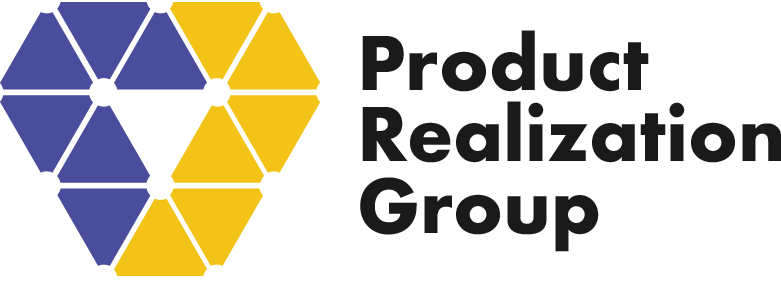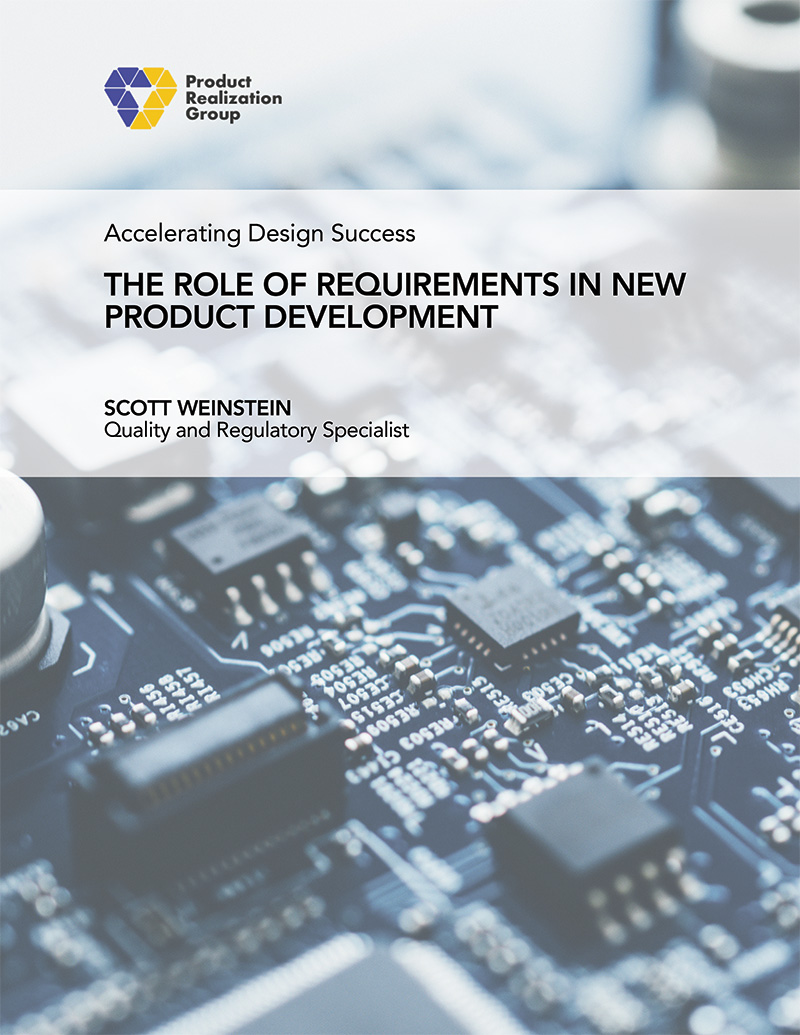How Can Product Requirements Deliver Design Success?
Download your free White Paper
Accelerating Design Success:
The Role of Requirements in New Product Development
Avoid common pitfalls when bringing a new hardware product to market. Ensure efficiency and increase your chances of getting the design right on the first pass. Discover:
- Why requirements are critical to product quality.
- Best practices for defining your requirements.
- How to effectively measure how well you meet the requirements.

About the Author
Scott Weinstein
Quality and Reliability Specialist
Scott Weinstein is a hardware development and manufacturing veteran with 25+ years of experience leading quality and reliability engineering programs at global companies, including Roku, Ford, Whirlpool, Keurig, Sonos, Harman, and Johnson Controls. A quality leader, Scott specializes in product design and operations for high-tech hardware companies. Scott has an MBA from the Worcester Polytechnic Institute and a Bachelor in Electrical Engineering from the Georgia Institute of Technology.
Accelerating Design Success
The Role of Requirements in New Product Development
Table of Contents
Driving Design Success Through Product Requirements
Part 1: Requirements and Quality
- Why Care About Requirements?
- Requirements Allow You to Measure Quality
Part 2: Defining Requirements and Using Them to Inform Product Processes
- Core Requirements
- Special Characteristics
- Informing the Process
Part 3: Measuring Success
- Using Engineering and Quality Tools to Develop and Measure Requirements
- Using T=the V Model to Understand the Development Cycle and The Relationship Between Requirements and Measurement
Conclusion
Glossary of terms
About the Author
About the Author
Scott Weinstein, Quality and Reliability Expert
Scott Weinstein is a hardware development and manufacturing veteran with 25+ years of experience leading quality and reliability engineering programs at global companies, including Roku, Ford, Whirlpool, Keurig, Sonos, Harman, and Johnson Controls. A quality leader, Scott specializes in product design and operations for high-tech hardware companies. Scott has an MBA from the Worcester Polytechnic Institute and a Bachelor in Electrical Engineering from the Georgia Institute of Technology.
Driving Design Success Through Product Requirements
In Product Realization Group’s work guiding organizations in their design and development processes, we often see companies designing products without clearly defining their requirements. This results in significant inefficiency, schedule delays, and increased costs as the products undergo multiple redesign cycles. While innovation should happen with few constraints, the New Product Development (NPD)/New Product Introduction (NPI) phase must be governed by market needs that create clear product objectives to drive product, engineering, and manufacturing requirements. These product requirements include key features, the product’s appearance, how it performs, where it will be used, and how long it should last.
Poor requirement management can have severe consequences for any product development process. Teams need precise requirements to avoid misalignment, leading to costly rework and design iterations. This inefficiency will drive up costs and cause delays in time-to-market, potentially giving competitors a head start. Furthermore, unclear requirements can lead to scope creep, where additional features or changes are introduced late in the process, further stretching resources and timelines. In the long term, this lack of discipline in managing requirements can harm a company’s reputation for delivering quality products on time, affecting customer satisfaction, brand reputation and profitability.
By sharing the following best practices, we hope to help product management and engineering teams avoid common pitfalls when bringing a new hardware product to market. This white paper discusses how we ensure efficiency and increase your chances of first-pass design success. Section 1 focuses on why you should care about requirements and how they relate to quality. Section 2 describes how to define your requirements. Section 3 shares the tools we use to develop and measure requirements and a model for how measurement relates to requirement definition.
Part 1: Requirements and Quality
Why Care About Requirements?
Having requirements early in the development process can provide a number of benefits, including faster time-to-market, better team coordination, facilitate agile engineering, development of verification and validation test planning, more effective change control, and a way to know when your product is complete.
Enhanced Innovation. Requirements enhance innovation and support Agile hardware development because clear requirements enable teams to focus their creativity within defined boundaries, ensuring that innovative solutions align with the overall project goals. They also provide a shared understanding of customer needs, essential for prioritizing tasks and managing trade-offs during iterative development cycles.
In Agile hardware development, where incremental progress and adaptability are key, early requirements act as a foundation that evolves with the project. By having a well-documented starting point, teams can:
- Facilitate collaboration: Cross-functional teams can work cohesively with a clear vision of the product’s purpose and constraints.
- Support rapid prototyping: Defined requirements guide the development of prototypes that address core needs, enabling faster feedback from prototype verification testing and refinement of requirements.
- Enable flexibility: When changes arise, having baseline requirements helps evaluate their impact and ensure adjustments remain aligned with objectives.
Fewer Redesign Cycles. Most importantly, having clear requirements dramatically lessens the number of redesign cycles required during development. This reduces the cost of development and the resources needed and shortens the time to market for the new product. One of our favorite metrics or Key Performance Indicators (KPIs) for New Product Development is First Pass Design Success, which looks at the percentage of products developed meeting all requirements without additional development cycles. With a focused continuous improvement effort in the development process, we’ve seen this KPI improve from under 50% to well over 80% in less than one year.
Better Team Coordination. Clear requirements also improve team coordination, as they ensure that the design team members are all working to the same plan. For complex hardware products, this team can include engineers in many different areas, such as electrical, mechanical, software, systems, safety, test, quality, and reliability along with operations and supply chain. And the larger the team, the more important this coordination becomes, especially when the team is also geographically dispersed.
More Effective Change Control. Starting with requirements also makes it easier to create a change control process and implement changes more effectively. So when it becomes necessary to change a requirement during the development cycle, your team can weigh the impact of the change on development & product cost, product quality, and the development schedule. If a change is made, it allows leaders to inform all impacted parties quickly.
Measuring Product Completion. Requirements allow you to decide when your product will be complete before you start developing. Without them, it can be hard to tell when you’ve successfully completed development as pressure mounts to keep making changes.
Requirements Allow You to Measure Quality
To measure quality, you first need to define your requirements. Consider these definitions of quality:
- First, minimal variation around the target. This is referred to as Six Sigma, zero defects, or even the Taguchi Loss Function.
- Next, meeting or exceeding customer needs and expectations. This one is used frequently.
- And finally, conformance to requirements.
These definitions have several areas in common: targets, expectations, and requirements. Each of these is hard to measure without documenting your goals. So unless you document the product’s targets, expectations, and requirements, it will be challenging to determine the quality of your products. To ensure quality, you should define goals in the NPI process using precise requirements.
These requirements can take the form of user stories, functional requirements, non-functional requirements, performance requirements, quantitative requirements, etc. Ultimately, what matters is being able to measure your products conformance to those requirements.
At Product Realization Group, we use quantitative requirements as much as possible. This facilitates use of the first definition of quality: minimal variation around the target. Quantitative requirements ideally have a target and tolerance, like 45 +/- 5, or may have upper and lower specification limits, like 40 to 50.
Quantitative requirements allow us to use statistics to measure such things as capability and stability and then use that information to predict future performance. Instead of just verifying a binary requirement, e.g., “good” or “not good,” we use integers to measure whether something is “good,” allowing us to generate a richer picture of the data. One example is the Taguchi Loss Function, an equation that quantifies the financial losses that result from product quality deviations from a target value.
Precisely defined requirements are critical to the NPD process, driving key improvements such as reducing redesign cycles, enhancing team coordination, streamlining change control, and providing clear criteria for product completion. They also play a vital role in enabling Agile hardware development, ensuring alignment and adaptability throughout the process. In the next session, we’ll explore best practices for creating requirements.
Part 2: Defining Requirements and Using Them to Inform Product Processes
Having established the importance of precisely defined requirements in driving NPD success and supporting Agile hardware development, the next step is understanding how to create and structure these requirements effectively. In this section, we’ll describe the best practices for defining requirements and demonstrate how they can inform and streamline product processes.
At Product Realization Group, we use a hierarchical approach to requirements definition, looking at customer-facing, engineering, and manufacturing. We recommend the product group start with the customer requirements once you’re through the concept and feasibility stages of new product development.
Core Requirements
Customer-Facing Requirements – define what you want to deliver to your customer. Customer-facing requirements are also usually framed from the customer’s perspective. These high-level requirements are usually determined by the product group, which describes the product in terms of customer needs, wants, and desires. They can include things like level of performance, overall physical size, number and types of inputs and outputs, usage and storage conditions, product lifetime, etc. These requirements could also have priorities assigned, like “must-have,” “should-have,” and “could-have.” This way, you can clarify what is most important when engineering trade-offs need to be made.
Sometimes, these requirements can come directly from your customer (e.g., a tier 1 automotive company) or a manufacturer (e.g., in the consumer products industry). Some requirements come from government agencies like the FDA for consumer health and safety or the EPA for the environment. Most requirements, though, need to be developed internally.
Engineering Requirements – are the translation of the Customer-Facing Requirements into engineering language with details that will facilitate the design process. These are defined by the engineering groups (electrical engineering, mechanical engineering, software, quality, etc). They go to the next level of detail below the Customer-Facing Requirements and should have a hierarchical relationship with the associated Customer-Facing Requirements. This could start with developing a functional block diagram, the functions associated with each block, and then the requirements for each functional block. This method works well with a modular architecture design approach.
Engineering Requirements should be precisely defined, with enough details to make design decisions and trade-offs and to develop verification and validation test methods. So, for example, instead of just stating a parameter’s value with associated tolerance, an engineering requirement would also include the associated operating conditions and measurement method. This could either be an industry standard test method or just an internal company method. Note that not all requirements will have a quantitative measure, though, as there will also be requirements that just describe how something should work, like a user story or using a specific material or component.
Manufacturing Requirements are the translation of the Engineering Requirements into contract or in-house manufacturing and supplier manufacturing requirements. These are defined by the manufacturing organization (manufacturing engineering, testing engineering, manufacturing quality, etc). These requirements will include the manufacturing processes needed to fabricate and assemble the product, the process parameters that need to be controlled, the product characteristics that need to be tested, and the associated test and measurement equipment for the process parameters and product characteristics. Here a correlation matrix can be helpful in looking at the engineering requirements, process parameters, and product characteristics and identifying the strength of the correlation between each of them.
Special Characteristics
During the development of the Customer-Facing, Engineering, and Manufacturing Requirements, Special Characteristics should also be identified. These Special Characteristics, both Process Parameters and Product Characteristics, can be categorized as follows.
- Critical Characteristics (CC), include characteristics associated with Safety and Government Regulatory requirements. This could include a tip-over angle to minimize the chance of a product falling over on a child or a maximum unwanted electromagnetic interference (EMI) that could interfere with the operation of other products nearby, like cell phones, radios, or medical devices.
- Significant Characteristics (SC) are important characteristics not related to Safety or Government Regulatory requirements but strongly correlated with customer satisfaction. Variation in a Significant Characteristic would have a perceptible change in performance for the customer or user. This could include a product’s standby or operational current resulting in a higher than usual monthly electric bill or a dimensional requirement that, if it varies too much, won’t fit or mate correctly with another product, like thread pitch on a bolt.
Identifying and categorizing unique characteristics helps identify the control methods that should be used for each characteristic. Since Critical Characteristics are related to Safety and Governmental Regulatory requirements, every product produced needs to meet these requirements, so some mistake-proofing, such as 100% inspection or testing, should be employed. Significant Characteristics, meanwhile, can be controlled using Statistical Process Control (SPC) or closed-loop control systems.
Informing the Process
Requirements make it possible to engage in several key product development processes:
- The Phase Gate Review Process defines the basic steps and deliverables required to develop your products, from concept to mass production. These phases and associated gates include prototyping, engineering verification, design validation, process validation, and mass production.
- The Design Review Process is conducted during each phase. This cross-functional review helps to highlight interdisciplinary design issues, ensures checklists are being followed, and identifies lessons learned in the development process.
- The Design Rules / Guidelines ensure design best practices and essential design tools are always used (such as deratings, Geometric Dimensioning and Tolerancing, stack-up tolerancing, models, and simulations). They also provide a place to document lessons learned.
Requirements also set the groundwork for testing since we want them to include verification and validation tests for each and every requirement. These tests will make up the test plan for each development build (prototype, engineering, design, pre-production). These tests or inspections could be anything from a simple visual inspection requirement to a complex measurement method, performance test, or reliability test.
By defining requirements hierarchically—spanning customer-facing, engineering, and manufacturing levels—and identifying special characteristics, organizations can ensure that all aspects of the product are aligned from concept to production. These requirements inform critical development processes such as phase gate reviews, design reviews, and design guidelines while providing the foundation for robust testing and validation. A well-defined requirements process enhances efficiency and ensures the delivery of high-quality products that meet customer expectations and regulatory standards.
Part 3: Measuring Success
With a clear understanding of how to define and structure requirements, the next critical step is measuring how effectively we meet those requirements. Ensuring alignment between the defined goals and actual performance is essential for maintaining quality and consistency throughout the development process.
Using Engineering and Quality Tools to Develop and Measure Requirements
When either verifying or validating a product during Product Development or testing a product during Mass Production, we need ways of measuring if we’re meeting or exceeding our requirements. We use the Product Characteristics and Process Parameters identified in the Requirements documents (Customer-facing Requirements, Engineering Requirements, and Manufacturing Requirements) to do this. The requirements can either be measured as Attributes, such as pass/fail, or as Variables, a measured value. The measurement methods can be easily derived if the Product and Manufacturing Requirements are clearly defined.
Ideally, verification and validation test requirements were included during Product Definition so you can follow your development build test plans.
Here are some tools that can help in developing and measuring requirements:
- Process and Design Failure Modes and Effects Analysis (FMEA) are engineering tools used to identify potential failure modes and Special Characteristics and to prioritize design and process improvements based on risk. These also identify design process improvements and verification and validation methods to catch the predicted failure modes. The Process FMEA is used to identify the Process Parameters you need to control to consistently deliver the Product Characteristics that are important to your customer.
- A Correlation Matrix is used to take the Special Characteristics identified in a Design FMEA and correlate them to Process Parameters identified in the Process FMEA.
- The Control Plan is used to identify all the Product Characteristics and Process Parameters that should be controlled during the manufacturing process. This tool will also identify which characteristics are Special, how they should be controlled, and what equipment will be used to measure the characteristics. The control method for Special Characteristics should use Statistical Process Control (SPC). For the equipment used to measure those Special Characteristics, Measurement System Analysis (MSA) or Gage Repeatability and Reproducibility (GR&R) should be used to ensure the equipment is capable.
Using T=the V Model to Understand the Development Cycle and The Relationship Between Requirements and Measurement
The V-Model can help explain the relationships and timing between the different types of requirements and the verification and validation that the design and process meet those requirements. There are multiple ways to show the V-Model, often used in software development. We’ll use one that focuses on developing hardware systems with requirements.
Once we have requirements, we can then figure out how to measure or verify the product design meets these requirements. This is usually referred to as Verification and/or Validation testing. While these terms are often used interchangeably, we use them as follows.
Verification – is performed during early development to drive improvements and iterations in the design to meet the design requirements. These development stages could include prototype, engineering, and early design builds.
Validation – is performed during the later stages of development to determine if the design is acceptable for mass production. These development stages could include later design builds, pre-production, and mass-production builds.
In summary, with clearly defined requirements in place, the next critical step is measuring how well you meet those goals throughout the product development lifecycle. Tools like FMEA, Correlation Matrices, and Control Plans help ensure alignment between design, process, and requirements. Verification and validation testing plays a key role—verification focuses on early development stages, driving design improvements. In contrast, validation occurs in later stages, ensuring the product is ready for mass production. The V-Model provides a framework to understand the relationship between requirements and testing, ensuring that quality and consistency are maintained at every phase.
Conclusion
By clearly defining requirements, you create the foundation for understanding what to measure and how to measure it, boosting efficiency and improving the likelihood of first-pass design success. It is imperative that you have the right level of experience and expertise to support this effort through every stage of product development—from defining requirements and processes to conducting Phase Gate Reviews, Design Reviews, and developing Design Rules/Guidelines, as well as performing Failure Modes and Effects Analysis, product performance and reliability testing, and supporting production manufacturing.
In conclusion, defining clear and precise requirements is essential to driving efficiency, accelerating time-to-market, and increasing the likelihood of first-pass design success. As we’ve discussed, a well-defined set of requirements forms the backbone of the New Product Development and Introduction process, ensuring alignment between design, engineering, and manufacturing. By following the strategies and tools outlined in this white paper, including effective measurement and validation methods, organizations can streamline their development efforts and avoid common pitfalls like inefficiency, delays, and unnecessary costs. A strong requirements foundation is key to achieving high-quality products that meet both customer expectations and organizational goals.
###
Glossary of terms
Agile Hardware Development: A methodology that applies Agile principles to hardware design and manufacturing, emphasizing iterative development, cross-functional collaboration, and adaptability to changes throughout the product lifecycle.
FMEA (Failure modes and effects analysis): “Failure modes” refer to the ways, or modes, in which something might fail. “Effects analysis” refers to studying the consequences of those failures. Failure modes and effects analysis is a structured way to identify and address potential problems or failures and their resulting effects on the system or process before an adverse event occurs.
GR&R (Gage Repeatability and Reproducibility): A statistical method used in measurement systems analysis (MSA) to evaluate the consistency and reliability of a measurement system by examining its repeatability (same operator) and reproducibility (different operators).
MSA (Measurement Systems Analysis): A structured process to assess the quality and variability of a measurement system, ensuring it provides accurate, reliable, and consistent data for process control and improvement.
NPD (New Product Development): The end-to-end process of designing, developing, and bringing a new product to market, often involving stages like ideation, prototyping, testing, and commercialization.
NPI (New Product Introduction): The phase of bringing a newly developed product into production and market readiness, focusing on ramp-up, quality assurance, and supply chain alignment.
SPC/Closed Loop Control Systems: Statistical Process Control (SPC) monitors and controls manufacturing processes using statistical methods, while closed-loop control systems use feedback to adjust processes in real time, ensuring consistent quality and performance.
Six Sigma: A data-driven methodology for improving process quality by identifying and eliminating defects, aiming for near-perfect performance (3.4 defects per million opportunities).
Taguchi Loss Function: A quality management concept that quantifies the financial loss incurred due to deviation from target performance, emphasizing the importance of minimizing variability.
V-Model: A development framework that represents the relationship between system verification and validation processes, structured in a “V” shape to highlight the connection between design stages and their corresponding testing phases.
Zero Defects: A quality management philosophy focused on achieving perfection in manufacturing by preventing defects through robust processes, clear standards, and continuous improvement.
###
For more information about how PRG can help you identify requirements for NPD, read our success story Ensuring Reliability in Ventiva’s Next Generation Electronic Product.
Speak to an expert about quality and reliability.



